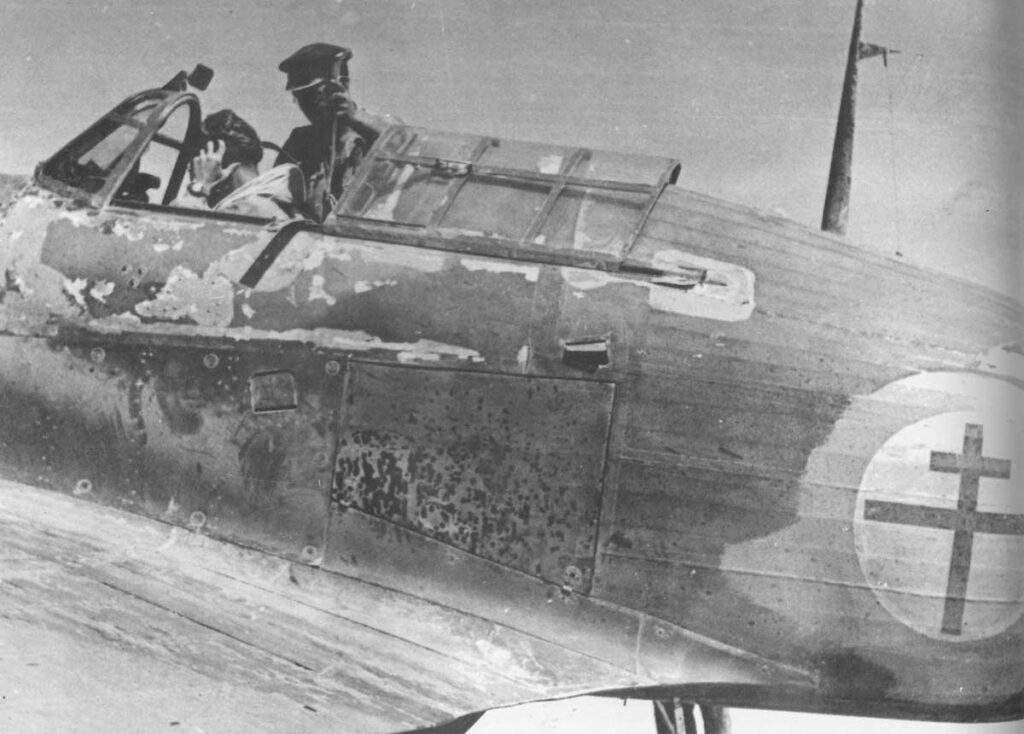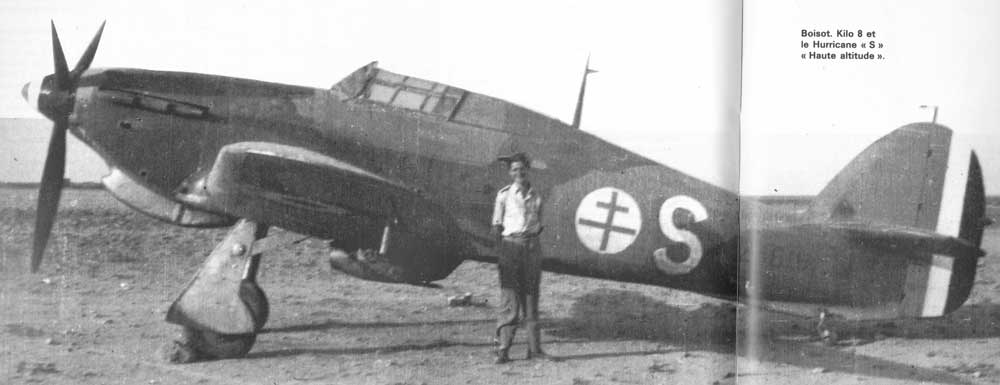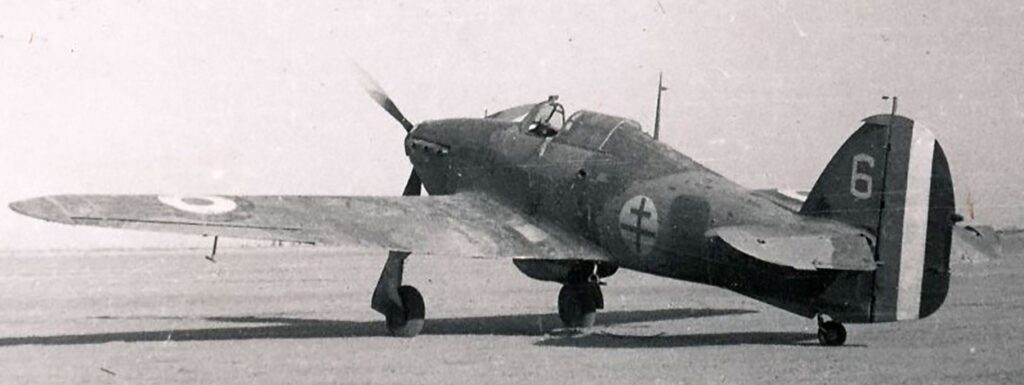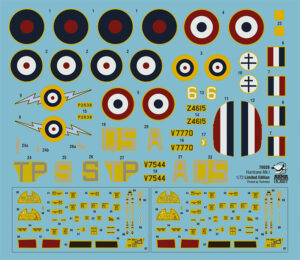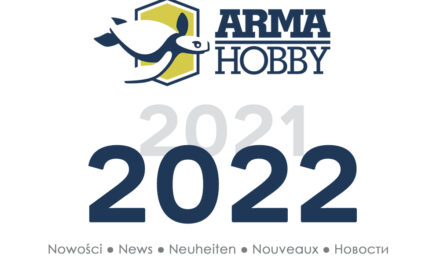For the “cover” illustration of Arma Hobby’s Hurricane Mk I trop/Western Desert kit we have selected an aircraft from a French unit which fought in North Africa in 1942. The fighter has a spectacular desert camouflage and carries Free French markings. Let us take a closer look.
An Alsatian in Africa
The Groupe de Chasse 1 “Alsace” comprised experienced aviators – but their aircraft were even more experienced, so to speak. By June 1942, our Hurricane Z4615 had been in active service for at least one year in the Middle East and Africa. That is why its paint scheme differed from the standard factory garb, the Free French markings notwithstanding.
Artwork by Marcin Górecki
It started its career with No. 80 Squadron RAF in June 1941. The aeroplane carried out one operational flight with No. 274 Squadron RAF in the last day of June, and from 3 July was used by No. 260/450 Squadron. Incidentally, the unit had a double number because the ground crews were from No. 450 Squadron RAAF, while the pilots originally served with No. 260 Squadron RAF. In July 1941, the Hurricane fought in Syria and Lebanon against Vichy France forces in Operation Exporter. It was used by the above-mentioned unit, and thereafter by No. 260 Squadron RAF, until mid-November, with an interruption of two months (September and October). In the early months of 1942, it was assigned to GC 1 “Alsace”. Later, after being allocated to No. 244 Wing RAF, the aircraft was no longer used operationally. It was struck off charge on 1 August 1943. (Information from John Engelstedt’s database).
Photo of a French Hurricane I trop. Weathering and partial repainting of aeroplane surface is clearly visible.
An analysis of the few photographs available on the internet, an archival French film (link) , and of photographs printed in the book Les Forces Aériennes Françaises Libres: 1942. Le Groupe de Chasse “Alsace” en Libye (published by ICARE) shows that the fighter was clearly fatigued.
Obviously every modeller will approach the issue as they see fit and proper, and the painting instruction is usually viewed as no more than a loose guideline, but in the present case I feel that a more detailed description is required to provide a better understanding of the paint scheme. Furthermore, although this is our most extensive attempt to date at recreating a non-standard paint scheme, I must add that I do not consider it a final and indisputable interpretation. But I am convinced that if you follow the description, you will build a replica that will be easily distinguishable from the schematically painted Hurricane models that abound.
Two French Hurricanes. In foreground is Z4434. On the background Z4615 aeroplane please note darker shade of fresh Dark Earth camouflage colour.
Secrets of the Aircraft’s Paint Scheme
What sticks out at first glance? The aeroplane’s left wing had probably been replaced, for the paint tones are clearly different. Initially, the Z4615 had brown patches painted wholly with a deeper variant of Dark Earth (DE), and this is excellently visible on the photograph which shows it standing behind Z4434, which has a distinctly lighter shade of DE. Adding approximately 4–5% of red to a standard DE paint allows one to obtain the requisite tone, which is not offered by any manufacturer of modelling paints.
At present, therefore, we have two varieties of DE and two of Middle Stone (MS). It would be difficult to expect that the MS on parts of different Hurricanes was equally faded – some difference, even minimal, should be anticipated. The situation could have been the same with the Sky Blue on the underside: its tone or degree of wear and tear on the left wing could have differed.
Snapshot of contemporary war document film. Z4615 aeroplane has tri-colour spinner.
The next DE variety that can be seen is that of the large, non-standard patch on the left side of the fuselage, near the cockpit. There can be no doubt that it was left after repair work. Here we have DE in an intermediate tone; perhaps this is fresh paint in a standard lighter tone, such as on Z4434.
The freshest patch of DE is located just behind the Cross of Lorraine and was created following the painting over of the individual letter “S” that the aeroplane carried at the beginning of its career with “Alsace”. The latter two patches appear to be very similar in tone.
Additionally, the British identification markings on the fuselage and vertical stabilizer had already been painted over with fresh MS.
Scan from a book ”Les Forces Aériennes Françaises Libres: 1942. Le groupe de chasse „Alsace” en Libye” « revue ICARE 136 », with photo of early Hurricane Z4615 with “S” code and tri-colour spinner front part.
 The aircraft flew with “Alsace” for a few months, probably from January 1942 until the end of the squadron’s involvement in the African campaign. Chronologically, the white letter “S”, which was probably inherited from No. 260 Squadron RAF, would have been the aeroplane’s earliest marking. At the time it had a tricoloured spinner. Once the “S” was painted over, a white six appeared on the vertical stabilizer. Later, the spinner was painted a standard black. Modellers may therefore enrich the paint scheme by adding a French cockade to the spinner, and the model will then show the aircraft as it looked in April/May 1942 at Idku airfield or Fuka aerodrome.
The aircraft flew with “Alsace” for a few months, probably from January 1942 until the end of the squadron’s involvement in the African campaign. Chronologically, the white letter “S”, which was probably inherited from No. 260 Squadron RAF, would have been the aeroplane’s earliest marking. At the time it had a tricoloured spinner. Once the “S” was painted over, a white six appeared on the vertical stabilizer. Later, the spinner was painted a standard black. Modellers may therefore enrich the paint scheme by adding a French cockade to the spinner, and the model will then show the aircraft as it looked in April/May 1942 at Idku airfield or Fuka aerodrome.
A common feature of aeroplanes that operated in the desert were the insides of the propeller blades, which were polished by the sand and glittered along nearly one half of their lengths.
French roundels on the Z4615
We believe that they were painted with British marking paints, and therefore were clearly darker than the roundels on French airplanes. This is confirmed by the dark shade of the markings in the photos.
In Hurricanes fitted with a tropical filter, connections between the sheet metal plates of the filter housing were sealed with a strip of cloth that was subsequently painted (similarly to the machine gun muzzles).
While the miniature of Z4615 will doubtless be appreciated by our French colleagues, it should also prove of interest to a great many other modellers – even those who consider wartime RAF paint schemes exceptionally boring.
Warm thanks to Mr Jean-Pierre Dussurget, Rédacteur en chef de la revue ICARE
English translation by Maciej Zakrzewski
See also:
- Hurricane Mk I trop “Western Desert” Limited Edition and other model kits in Arma Hobby webstore
Model maker for 45 years, now rather a theoretician, collector and conceptual modeller. Brought up on Matchbox kits and reading "303 Squadron" book. An admirer of the works of Roy Huxley and Sydney Camm.
This post is also available in:
 polski
polski




